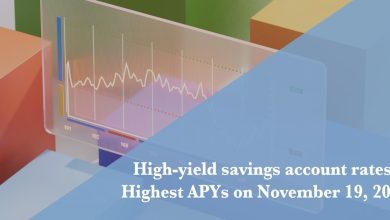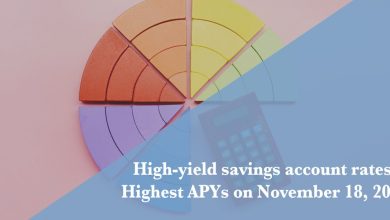Will Savings Rates Stay High Into 2026? Here’s the Key Indicator To Watch

Key Takeaways
- Odds for a Fed rate cut in December have dropped to about 50-50 as inflation stays firm and data delays make the outlook hard to read.
- If the Fed holds rates steady next month, today’s strong savings and CD yields could last into early 2026 before any new cuts arrive.
- You can track the rate-cut odds yourself with the CME FedWatch tool, which updates as traders react to new data and shifting expectations.
What’s Changed in the Outlook for Fed Rate Cuts
When you want to know where bank savings rates are headed, it all comes down to what the Federal Reserve does next. That’s because the Fed’s benchmark rate directly influences how much banks and credit unions pay on savings, money market, and CD accounts.
A month ago, markets were almost certain the Fed would cut its benchmark rate twice before year-end—once in late October and again in mid-December. The first prediction came true when the central bank lowered rates on Oct. 29. But since then, the odds of another rate cut in 2025 have dropped sharply. Markets currently put the chances of a quarter-point cut at the Dec. 10 meeting at only about 50–50.
The uncertainty stems from several crosscurrents. The government shutdown has delayed key economic data releases, leaving the Fed with less visibility on inflation and growth. Meanwhile, the central bankers have had to balance competing information: the job market has given mixed signals and inflation has ticked higher.
Why This Matters to You
If the Fed holds off on another rate cut, your savings could keep earning more for longer. Watching market odds can help you anticipate when those returns may start to slip.
The Fed’s fixes for those problems pull in opposite directions—cutting rates could support jobs, while holding rates steady helps fight inflation.
With limited data and divided priorities, Fed officials themselves are split on what to do next. The decision won’t come until December, but for now, markets are just as unsure, pricing in about even odds that the Fed stays put rather than cutting again.
How That Could Affect What You’ll Earn on Your Cash
Because the Fed’s rate directly influences what banks and credit unions pay on savings, a December pause would be good news for savers. Instead of the steady downslide many expected, rates could hold roughly where they are now. If the Fed decides to forego a cut next month, the earliest change wouldn’t come until late January, keeping today’s strong yields in place a little longer.
Though what you can earn on savings accounts and CDs has slipped from the 2023–2024 highs, returns are still historically strong. Today’s best high-yield savings accounts are paying in the mid-4% range, with a few even offering 5%. And the top CDs remain appealing too, with guaranteed 4.00%–4.50% yields available across every term from 3 months to 5 years.
Tip
Aside from making sure your account offers a competitive rate, there’s nothing you can do to control what banks pay on savings accounts. But if you’re shopping for a CD, timing matters. Knowing whether a Fed rate cut is likely can help you decide whether to lock in a CD now, before the rates you can secure move lower.
How To Track Rate-Cut Odds Like the Pros
What the Fed decides is never certain until its official announcement at the end of each meeting. Every six weeks or so, central bankers meet for two days to review the latest economic data and debate whether to move their benchmark rate. Since no one knows what new data will emerge before each meeting, any forecast is only an educated guess.
But financial markets make those guesses in real time, and you can see them for yourself. The CME FedWatch Tool shows the probabilities traders assign to different rate outcomes at upcoming Fed meetings. You don’t have to be a Wall Street insider to use it.
Click on the tool, and you’ll see tabs for each scheduled Fed meeting. For example, selecting the Dec. 10 tab at the top will display the market’s current odds for various rate scenarios. The chart indicates at the top what today’s target range is (for instance, “375-400” right now, which means a federal funds rate of 3.75%–4.00%) and compares it to potential new ranges. The bar labeled 350-375 represents the probability of a quarter-point cut, while 375–400 shows the odds of no change from today’s level.
Those bars move constantly, sometimes inching higher or lower with daily headlines, and other times swinging sharply after fresh data or Fed commentary. Checking the chart regularly is the easiest way to understand Fed expectations and to anticipate how savings and CD rates might move next.






